Is Pottery Sustainable? A Smarter, Eco-Conscious Décor Choice
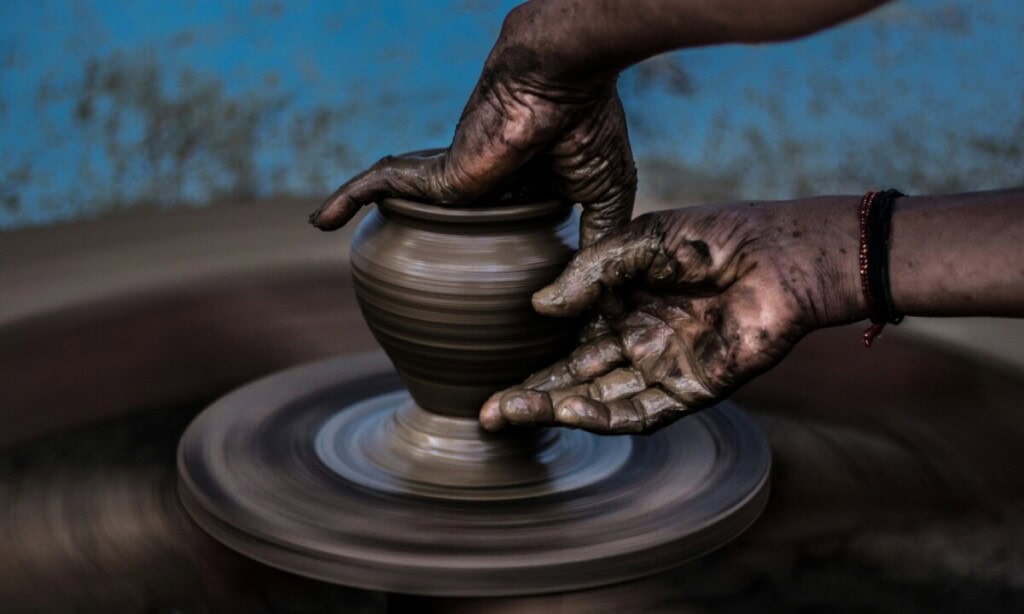
Pottery is more than just décor—it’s a sustainable choice that embraces natural materials, durability, and artisanal craftsmanship. Unlike mass-produced plastics, pottery is built to last, reducing waste and promoting conscious consumption. From its eco-friendly production methods to its timeless appeal, discover why pottery is a smarter, greener addition to any home. The post Is Pottery Sustainable? A Smarter, Eco-Conscious Décor Choice appeared first on Redfin | Real Estate Tips for Home Buying, Selling & More.
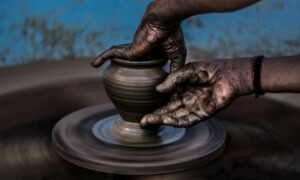
As sustainability takes center stage in modern home design, more consumers are turning to eco-friendly decor options that blend aesthetics with environmental responsibility. One such choice is pottery, a timeless craft that aligns with the principles of sustainability through its natural materials, durability, and artisanal production methods. Unlike mass-produced plastic or synthetic décor, which often contributes to waste and pollution, pottery is made from natural clay, is long-lasting, and can even be repurposed or recycled.
Whether you are designing for an apartment in Tuscaloosa, AL, a house in Ocala, FL, or making a rental home in Covington, KY feel more elevated, explore why pottery is a smarter, more sustainable décor choice.

1. Natural materials: A greener alternative
Pottery is primarily made from natural clay, a resource that is abundant and biodegradable. Unlike plastic or synthetic decor items, pottery does not contribute to long-term environmental waste. Many artisans also prioritize non-toxic, lead-free glazes, further ensuring that their creations remain safe for both users and the planet.
The earth’s built-in recycling system
The earth provides a rich, diverse ecosystem that comes with a built-in recycling system. The final product of pottery is created from earth’s recycling with clay materializing from animals, minerals, and vegetation. “Clay is alive, it’s been a part of our life since the birth of man. A delicate dance between functionality and artistry. Pottery is eternal,” explains Swan City Ceramics located in Lakeland, FL.
Charlotte, NC-based Two Ships Pottery & Crafts emphasizes this point, noting, “Just like the Earth, clay scraps can be rehydrated and recycled to create pottery, resulting in art and ware that is eco-friendly, especially when purchased from your local clay artists and artisans.”
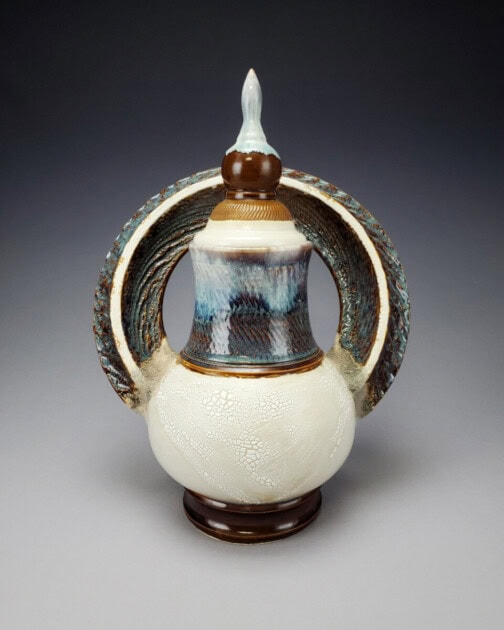
Feeling grounded with clay
Working with clay is both a creative and sensory experience, fostering a deeper connection to the natural world. “Because clay comes from the earth, it engages the senses in a unique way—especially when you take off your shoes, ground your feet, and get your hands dirty,” says Keilah Johnson, owner of Clay Works Art in Greenbrier, AR.
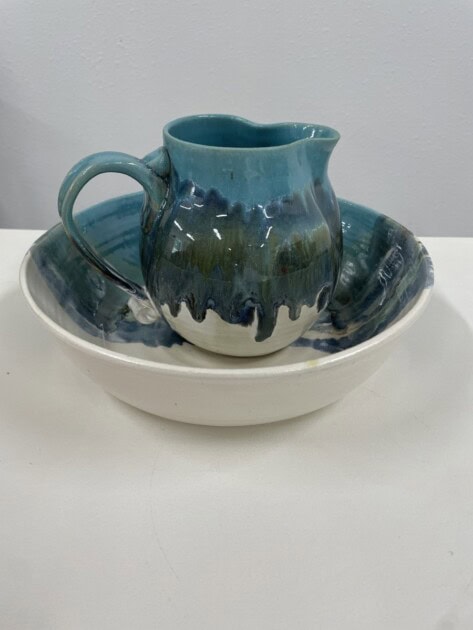
2. Durability: Less waste, more value
One of the core aspects of sustainability is longevity. Unlike mass-produced plastic homeware, which often breaks or deteriorates quickly, pottery is built to last. High-fired ceramics are resistant to wear and can endure for decades when properly cared for, reducing the need for frequent replacements.
A timeless art for generations
“Pottery has sustained the test of time, dating back nearly 30,000 years B.C., and has been a functional part of society the entire time,” says Tessa Hall, owner of The ClayGround, located in Shreveport, LA. “From Native American vessels, early American butter churns, and Asian kimchi pots have been passed down for generations paving the way to sustaining families for multiple generations.”
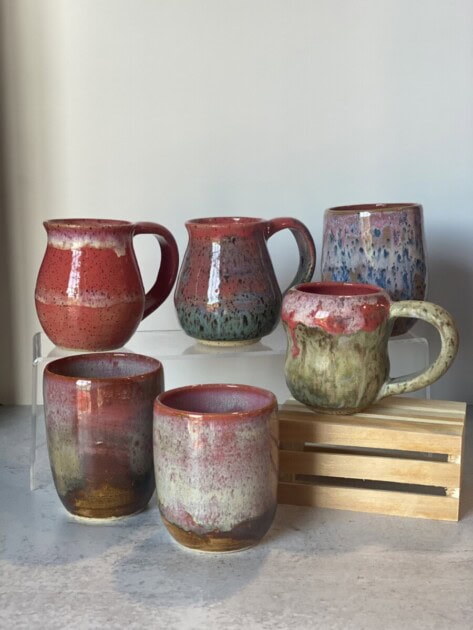
A connection to ancient traditions
Lexington, KY–based Matchstick Goods explains, “Humans have been making pots for thousands of years. Even now, with our improved tools and generations of learning, ceramics are still just the process of molding mud into beautiful things, and rendering them permanent with heat. The process is slow and deliberate; the only other input besides clay and heat is the artist and their craft. Owning handmade ceramics means participating in one of civilization’s most ancient, renewable, and simple traditions.”

Building a collection that lasts
Building a collection of durable and timeless pieces is an approach that not only reduces waste but also fosters a deeper appreciation for craftsmanship. “When you create with clay, you create something eternal,” states Clay Co-Op, a St. Petersburg, FL based pottery studio. “What you make will outlive you for thousands of years, and has the potential to be used by hundreds of people. Homemade pottery is not a fast fashion trend that will be tossed out when the next line is released—it’s a piece of art, made from Earth’s most natural materials, that will endure the test of time. It will never biodegrade and pollute the earth, because it is the Earth.”
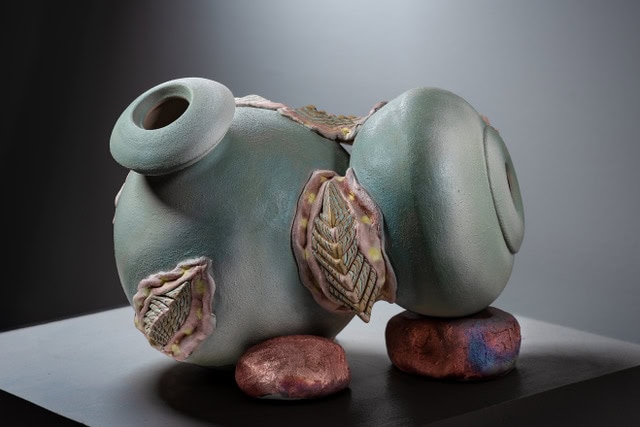
Mud Dabbers Pottery of Brevard shares, “It not only fulfills aesthetic needs but also supports eco-friendly practices. Pottery will always persevere through time due to its longevity and cultural significance.”

3. Energy-saving practices
The sustainability of pottery also depends on how it is produced. While traditional kilns require high temperatures, many modern studios are adopting greener practices, such as using solar-powered kilns or recycling clay scraps to minimize waste.
Reducing our carbon footprint
Located in the Butchertown neighborhood of Louisville, KY, Hadley Pottery uses natural materials, free of microplastics, promoting healthier living environments. A sustainable and eco-friendly choice is using regional clay deposits that reduce transportation-related carbon footprints. Pottery’s timeless design and exceptional durability allow it to be passed down through generations, minimizing waste and the need for frequent replacements.
Sunny Ceramics, based in Charleston, SC, adds, “Pottery often has a lower carbon footprint compared to mass-produced items that have to be shipped long distances, when produced locally. Additionally, smaller-scale pottery production tends to use less energy and fewer resources than large-scale manufacturing.”
4. The timeless appeal of handcrafted pottery
Covington, LA-based artist Janie Dick Pottery says, “Pottery is not only beautiful and unique, but also built to last, meaning it doesn’t need to be replaced as often. Owning handmade ceramics encourages the use of durable, reusable products in the home.”
Morgan Williamson, owner of Handmade Studio TN, adds, “Handcrafted pottery encourages a deeper connection to the earth through thoughtful, lasting craftsmanship. It’s a medium that never gets old and can continue to inspire us in our homes and on our tables.”
Art that lasts a lifetime
“With all the focus on sustainability these days, I am happy to see a resurgence in the appreciation of pottery and ceramic arts,” Atlanta, GA-based TJ Pots Ceramics expresses. The substance, clay, as well as the materials used for glazes, comes from our Earth. The process of making functional pottery has not changed much over thousands of years. Handmade pottery is durable and safe to use with food, and it doesn’t contribute to landfills or plastic particles that end up in our oceans. It is my hope that this trend of buying handmade pottery will continue to grow as we focus more on caring for Mother Earth.”
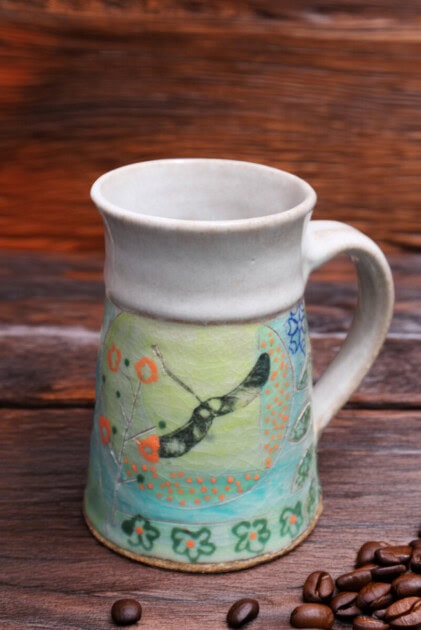
5. Supporting local and small-scale artisans
Mass production often leads to excessive resource consumption and pollution, but pottery made by local artisans typically follows more sustainable practices. By purchasing handmade ceramics from small businesses, consumers help reduce the carbon footprint associated with large-scale manufacturing and global shipping.
Benefits of supporting small businesses
Sourcing materials close to a potter’s manufacturing facilities not only supports local economies but also significantly reduces shipping distances and energy consumption, further reinforcing sustainability. Dryden Pottery located in Hot Springs, AR makes their clay and glazes in house and sources ingredients in their region.
Sara Truman, owner of Studio T/M Ceramics in Gainesville, FL, adds, “Small business potters are constantly considering how to better conserve water, electricity, wood, gas, and clay, frequently recycling products that do not meet their quality standards that eventually are made into something else. Potters pour their imaginations into their work and often do it not only for the love of the art but also as their business. Purchasing from small, minority-owned businesses also supports sustainability by reducing the need for shipping and other carbon-intensive processes associated with distant purchases ”

Pottery is an incredibly sustainable home trend due to its use of natural materials like clay, which is abundant and environmentally friendly. Each piece is durable, often lasting for generations, reducing the need for replacements and minimizing waste. At Prodigal Pottery, sustainability goes further by providing jobs to women overcoming domestic violence, homelessness, and sex trafficking, offering them a fresh start. Each piece is not only eco-friendly but also has a meaningful impact on these women and their families.”
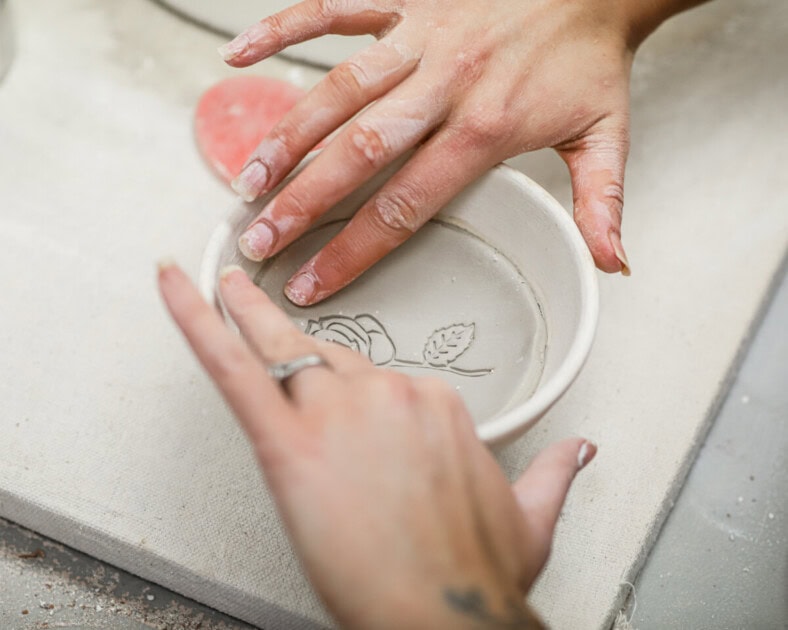
Building a connection with local artisans
Stella NC Pottery recommends supporting a local potter who cares about every piece they make. “One benefit of connecting with a local potter is that you can ask about their sourcing and production practices. Getting your hands onto local pottery ensures the pieces are a good fit for your own hands. Finally, since sustainability hinges on durability, you can ask a local potter if they test their wares for thermal shock. So with just a little bit of care, pottery can add beauty to a lifetime of your daily routine.”
So, is pottery sustainable? A smart and meaningful décor choice
As the demand for eco-friendly home décor grows, pottery stands out as a smart, sustainable option that merges function, beauty, and environmental responsibility. By choosing ceramics made with natural materials, supporting energy-efficient production, and investing in durable pieces, consumers can make a positive impact on the planet while enhancing their homes.
Whether it’s a hand-thrown vase, an artisan-crafted mug, or a statement planter, pottery offers a meaningful way to incorporate sustainability into everyday living. As more brands embrace greener practices, this ancient craft continues to evolve into a modern symbol of conscious consumerism.
The post Is Pottery Sustainable? A Smarter, Eco-Conscious Décor Choice appeared first on Redfin | Real Estate Tips for Home Buying, Selling & More.


